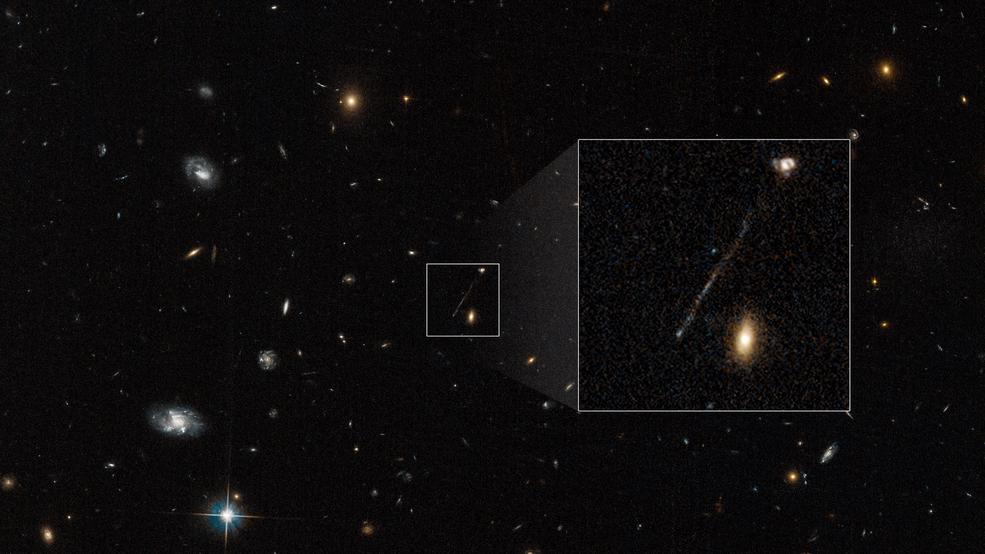Suddenly finding herself too busy, the blogger writes about four months in a single quicky post with three things from space. (However, this time she resists using you-know-who-chatbot, for a change, instantly reducing the quality of what you’re about to read.)
Rogue black hole with chain of stars
The Hubble and the Keck telescopes photographed a unique nomad of a black hole. The rogue hole moves fast in the space between galaxies and apparently leaves a gleaming trail of stars behind it.
Brace yourselves for astronomical numbers. The black hole seems to be 50 million light years away, weighs 20 million times the Sun, and its trail of stars has a length of 200 thousand light-years. Also, it moves so fast that it could go from here to the Moon in 14 minutes.
Most probably the hole was ejected after some gravitational give-and-take with other supermassive holes, the beasts in the centers of galaxies which merged at some point. And its passage through interstellar gas triggers the formation of new stars that then follow it. Enjoy.

Life-related compounds found on asteroid
The blog has been following the Hayabusa mission to collect soil from asteroid Ryugu and return it to Earth throughout the last few years. Now the sample was analyzed and scientists were excited to see that, among others, it contained vitamin B3 and one RNA base.
It sounds a little wild, I know; the context here is that somewhat complex compounds that later served as the breadboard for life, might have developed in space and rained on Earth in asteroids. It’s not a new theory, it’s far from settled, and it’s definitely exciting.
Star swallowing its planet captured for first time
The Palomar observatory saw a star swallowing a planet of size comparable to Jupiter.
This act of violence was seen as a sudden flash. It looked like what expected from two stars merging, only that it was much much fainter. The snack could only have been a planet.
It’s common lore that stars close to the end of their lives grow up and engulf their closest planets, as will happen with the Sun as well — but this was not the case here. This star lies well within the combination of temperature and size that’s known as main sequence, safely in the main phase of its lifecycle. But it seems that it just started running out of fuel, swelled just a bit, and this planet had the bad luck of lying too close to it, offering us this kind of event live for the first time ever (where “live” here means just 12,000 years ago).
—
Do you want to receive one monthly reminder with links to the Ph-word posts? Join the mailing list.
